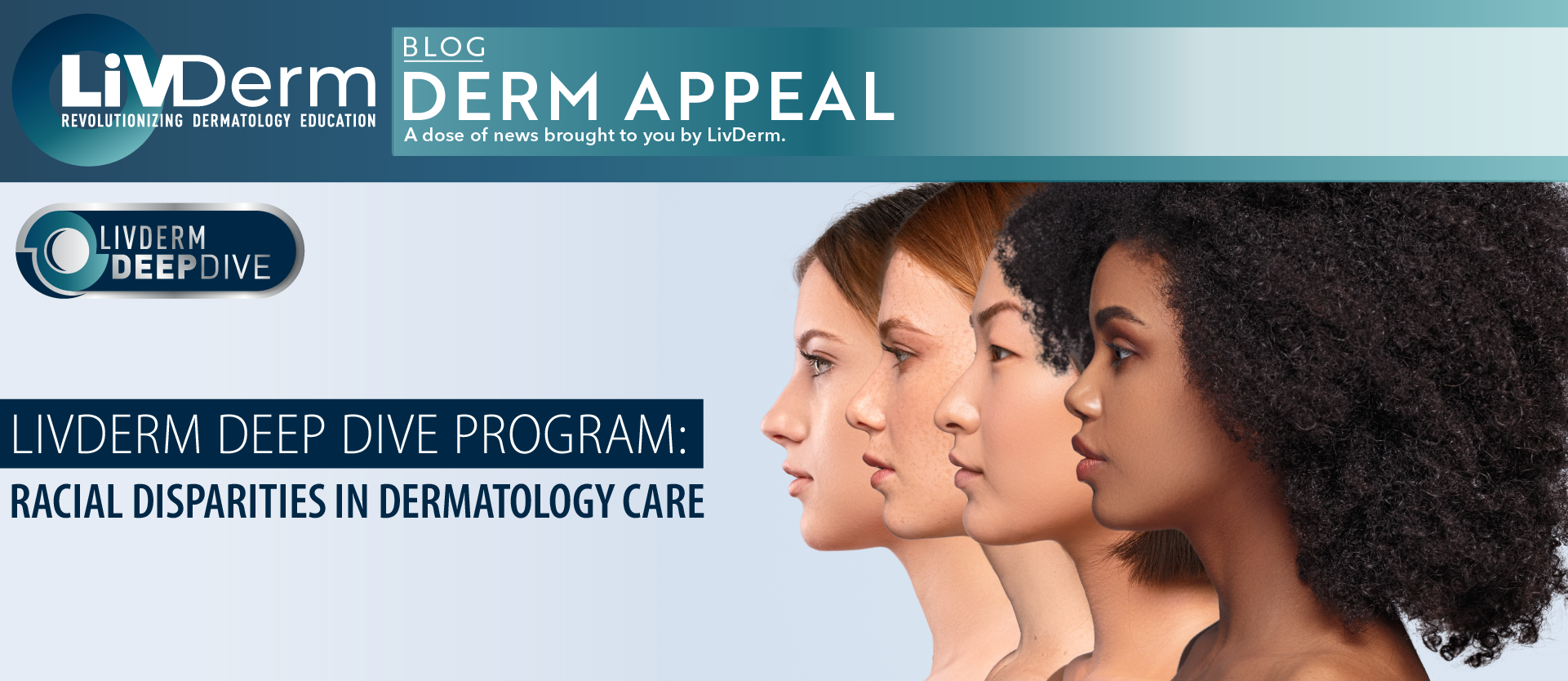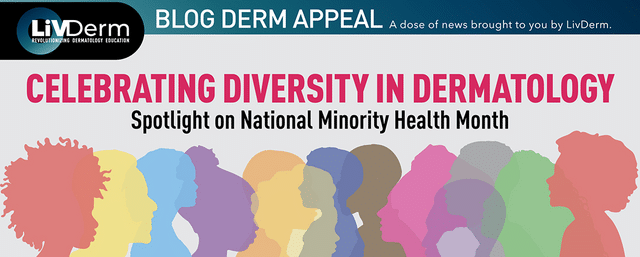Racial and ethnic disparities exist in all aspects of healthcare and can be detected in dermatology care, where options for patients of color remain limited when compared with those tailored to White patients. Patients of various racial or ethnic groups, such as those of Black, Asian, Hispanic or Latino descent, are often less likely to receive acne care from dermatologists. Furthermore, Black patients are significantly less likely to visit dermatologists or receive acne treatment than their White counterparts.
Racial Disparities in Prescribed Treatments
Data from two recent studies confirms persisting disparities in the field, revealing significant discrepancies between prescribed treatments between racial groups. In July 2020, a cross-sectional study was published in the Journal of the National Medical Association; its results showed that Black patients had significantly lower odds of receiving prescription topical medications including isotretinoin, adapalene, and tazarotene. Black patients with atopic dermatitis had lower odds of receiving desonide, dupilumab, and crisaborole when compared with White patients. In patients with psoriasis, Black individuals were less likely to receive cyclosporine and etanercept.
The second retrospective cohort study, published in March 2020 in JAMA Dermatology, investigated a cohort of nearly 30,000 individuals to find that non-Hispanic Black patients were more likely to receive retinoids and topical antibiotics compared with non-Hispanic White patients; they were also less likely to receive oral antibiotics, spironolactone, and isotretinoin.
Racial Disparities in Dermatology
In a recent interview with Dermatology Advisor, several dermatologic experts shed some light on their experiences with racial disparities, reasons underlying the persisting problems, as well as recommendations for aesthetic medicine experts and the industry for improvement.
The professionals included in the article were: Andrew F. Alexis, MD, MPH, chair of department of dermatology and director of the Skin of Color Center at Mount Sinai; Shawn Kwatra, assistant professor of dermatology at Johns Hopkins University School of Medicine, co-author of July 2020 study; and John Barbieri, MD, MBA, dermatology research fellow at the University of Pennsylvania and co-author of aforementioned March 2020 study.
Speaking to the racial disparities in dermatologic care, Dr. Alexis told Dermatology Advisor: “There are several important racial/ethnic disparities in dermatology care. The proportion of dermatologists and dermatology trainees belonging to a racial/ethnic group that is considered underrepresented in medicine (UIM) is lower than most other specialties and well below the proportions of these groups – for example, Black/African American, Hispanic/Latinx, Native American/American Indian – in the US population. In a 2016 article published in the Journal of the American Academy of Dermatology, my co-authors and I wrote:
‘Black dermatologists comprise only 3% of all dermatologists, despite the fact that 12.8% of Americans are black. For Hispanics, the statistics are just as sobering, with only 4.2% of dermatologists of Hispanic origin compared with 16.3% in the general population. These differences are worse for dermatology than physicians overall, and we are one of the least ethnically/racially diverse specialties, only slightly better than orthopedics.’
In addition, many of the disorders that disproportionately affect populations with skin of color – such as pigmentary disorders, hair and scalp disorders including scarring alopecia, and keloids – have limited treatment options and are relatively understudied from a research or drug development standpoint.
Fortunately, these issues are changing, but we still have a ways to go. There are also disparities in access to specialty care including dermatology – Black and Latinx populations are less likely to see a dermatologist, and disparities in access may be one contributor to this.”
Reasons for Disparities
While different skin conditions affect different racial and ethnic groups to varying degrees due to a combination of genetic, environmental, and structural skin differences, the standards of care and access need to remain equal between populations.
According to Dr. Alexis, disparities in the field are primarily caused by “reduced exposure to dermatology specialty, historical relative lack of funding and centers of of excellence for research into scarring alopecias, hyperpigmentation, keloids, and other disorders that may be less common in the general population but highly prevalent in specific populations with skin of color; and socioeconomic factors.”
Further explicating the differences, Dr. Barbieri told Dermatology Advisor:
“Since there are no data to suggest differences in acne severity by race/ethnicity, it is unlikely that underlying patient disease characteristics are responsible for these differences in treatment patterns. However, risk aversion, medical distrust, and physician bias are potential factors that may be responsible for the differences observed in our study. Poor coverage for acne medications by Medicaid may partially explain why those with Medicaid insurance were less likely to receive topical retinoids, oral antibiotics, spironolactone, and isotretinoin after controlling for other sociodemographic factors.”
Recommendations
The team of dermatologic experts shared several recommendations with Dermatology Advisor to help bridge racial gaps in aesthetic medicine. Dr. Alexis suggested “participating in mentorship programs such as those provided by the AAD, the Skin of Color Society, the Women’s Dermatological Society, and other organizations,” to raise awareness and get involved. He also highlighted the need for further study of skin conditions in patients of color:
“There is a need for research and new drug development for central centrifugal cicatricial alopecia, dissecting cellulitis of the scalp, acne keloidalis nuchae, melisma, postinflammatory hyperpigmentation, and lichen planus pigmentosus – to name a few conditions that disproportionately affect populations with skin of color and have limited treatment options.”
Meanwhile, Dr. Kwatra emphasized the ongoing efforts of the documentation of diverse patient populations. “There has been a great effort by dermatologists to increase medical photographs from diverse patient populations in our medical literature and textbooks. This should continue to improve in the future.”
Dr. Barbieri underscored the need for additional research efforts and encouraged self-reflection in practitioners who can actively work to combat racial disparities within their own practice. “ I think it is important for clinicians to always be self-reflective of their practice patterns and to try to identify potential sources of bias. We know that throughout medicine there are disparities in outcomes across a range of sociodemographic factors, and it is important for clinicians to reflect on what they can do to ensure they are providing empathetic, patient-centered care for all of their patients,” he told Dermatology Advisor. “There is a need for further study to understand the reasons for these potential disparities and to develop strategies and interventions to ensure equitable care for all patients with acne.”
Research has found that patient satisfaction increases when dermatologists undergo enhanced residency training in skin of color, cultural competency, cost-conscious care, and empathic communication skills. In addition, greater dermatology workforce diversity can also contribute to reducing racial disparities in care as this can increase trust and communication between providers and patients of color. To further assist clinicians in bridging the racial gaps in dermatologic care, LivDerm is offering a novel Deep Dive: Racial Disparities in Dermatology online learning program between March 6-7, 2021 that aims to equip dermatologists with the most effective and up-to-date strategies to combat inequities in the clinical practice.
















